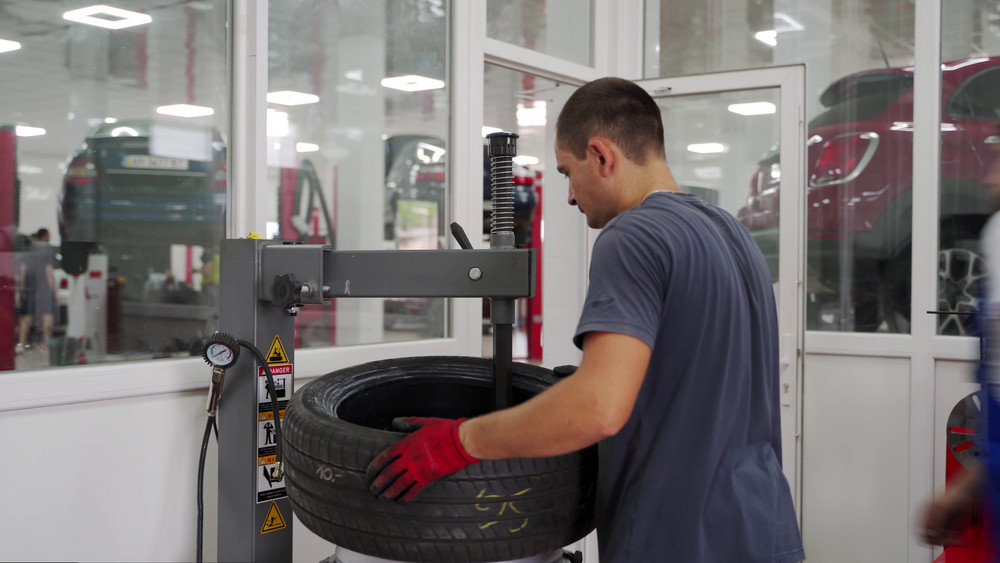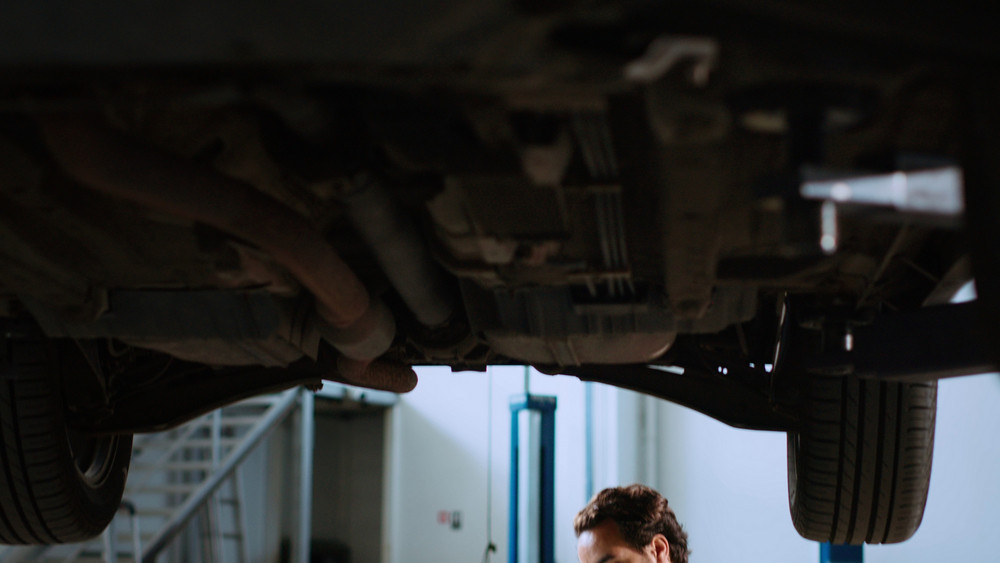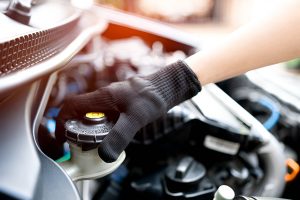Highlights:
- Following a regular maintenance schedule prevents expensive repairs and improves safety.
- Warning lights, strange sounds, and changes in handling signal the need for servicing.
- Every car has a manufacturer-recommended maintenance timeline—use it as your guide.
- Seasonal checkups help ensure performance and safety during extreme weather.
- Neglecting maintenance affects fuel economy, engine health, and resale value.
- DIY checks can help you monitor your car, but a trusted auto mechanic for general repair should handle complex issues.
- Keeping a maintenance log can save money and extend your vehicle’s lifespan.

Routine car maintenance is one of the most important parts of owning a vehicle, yet it’s also one of the most overlooked. Life gets busy, and skipping an oil change or tire rotation can seem harmless—until you’re faced with a costly repair or a roadside breakdown. Regular maintenance helps your car run efficiently, reduces long-term expenses, and keeps you safe behind the wheel.
Knowing when your car needs maintenance is just as important as doing the work. While some drivers stick strictly to mileage, others wait for problems to show. Ideally, you’ll do both: follow the recommended schedule and look for warning signs that suggest your car needs attention now.
In this article, you’ll learn how to spot the signs that it’s time for routine car maintenance, what services to expect at different mileage intervals, and when to call a professional auto mechanic for general repair.
The Importance of Routine Car Maintenance
Routine maintenance is more than just an oil change—it’s an investment in your car’s longevity, safety, and performance. Think of it as preventive care. When you take steps to maintain your vehicle consistently, you:
- Reduce the risk of mechanical failures
- Improve fuel efficiency
- Ensure smooth and reliable performance
- Avoid costly emergency repairs
- Extend the overall lifespan of your vehicle
Neglecting small issues like low fluid levels, worn brakes, or dirty filters can snowball into major problems that require expensive parts and labor. For example, skipping oil changes can damage your engine, and worn brake pads can compromise your ability to stop safely.
Follow the Manufacturer’s Maintenance Schedule
Every vehicle comes with a maintenance schedule, typically outlined in the owner’s manual. This guide includes time- or mileage-based recommendations for inspections, part replacements, and fluid changes. Even if your car seems to run fine, sticking to this schedule is crucial.
Typical Service Intervals:
- Every 3,000–5,000 miles:
- Oil and oil filter change
- Check tire pressure and tread depth
- Inspect lights and windshield wipers
- Every 15,000–30,000 miles:
- Replace air filters (engine and cabin)
- Brake inspection and fluid check
- Rotate and align tires
- Every 60,000–100,000 miles:
- Replace spark plugs
- Inspect or replace timing belts
- Flush transmission and coolant systems
Failing to meet these intervals could void your warranty or lead to performance issues, even if you don’t drive often. Time-based maintenance still matters—fluids degrade, and parts can wear down over time.
Warning Signs That It’s Time for Maintenance
Sometimes, your car will let you know it needs attention—even between scheduled services. These signs shouldn’t be ignored, as they can indicate developing problems that could worsen over time or leave you stranded.
Warning Lights
Modern vehicles are equipped with a range of dashboard warning lights that alert you to issues. These are your car’s first way of communicating that something needs inspection or repair.
- Check Engine Light: This general alert can point to many issues, from a loose gas cap to serious engine or emissions problems. Don’t ignore it—get a diagnostic scan to determine the cause.
- Oil Pressure Light: Indicates a drop in oil pressure. This could stem from a leak, a worn oil pump, or low oil levels. Driving with low oil pressure risks permanent engine damage.
- Brake Warning Light: May signal several problems, including low brake fluid, worn brake pads, or malfunctioning ABS components. Immediate inspection is recommended for your safety.
- Battery Light: If your battery or charging system isn’t functioning properly, this light will come on. It might be a dying battery, corroded cables, or alternator trouble.
Unusual Noises
Unfamiliar sounds are often one of the earliest indicators of car trouble. Trust your ears—if something sounds off, it probably is.
- Squealing when braking: Typically a sign that your brake pads are worn thin and need replacing. Ignoring this could damage your rotors.
- Grinding or groaning sounds: Can suggest issues in your brakes (metal-on-metal contact), transmission, or wheel bearings. These noises often mean advanced wear.
- Knocking in the engine: A deep knocking sound could result from worn crankshaft bearings or using low-octane fuel in a high-compression engine. It’s often linked to engine wear and oil issues.
- Whining when accelerating: Could indicate transmission problems, such as worn gears or low fluid.
Changes in Performance
If your car feels different when you drive it—hesitating, jerking, or just not performing like usual—it could signal underlying mechanical problems.
- Difficulty starting: This may come from a weak battery, a faulty starter motor, or a failing ignition system.
- Reduced fuel economy: Drop in miles per gallon may stem from clogged air filters, malfunctioning oxygen sensors, or dirty fuel injectors.
- Rough idling or poor acceleration: Often linked to dirty spark plugs, vacuum leaks, or fuel system problems. A tune-up might resolve the issue.
- Frequent stalling: If your engine stalls at lights or while driving, the issue may lie with the fuel system, idle control valve, or even an electrical fault.
Smells and Smoke
Your sense of smell can also be a valuable tool in diagnosing car trouble. Strange odors are warning signs that something might be burning or leaking.
- Burning oil smell: Usually means there’s an oil leak dripping onto a hot engine part, like the exhaust manifold. Ignoring it can create fire hazards or reduce oil levels dangerously.
- Sweet syrupy odor: This scent often signals a coolant leak, commonly from the radiator, hoses, or heater core.
- Burning rubber smell: May indicate a slipping serpentine belt or a hose coming into contact with hot engine parts.
- Visible smoke: Blue smoke often means your engine is burning oil; white smoke may indicate coolant entering the combustion chamber. Black smoke suggests excessive fuel consumption.
Fluid Leaks
Spots on your driveway or garage floor shouldn’t be dismissed. Identifying the fluid can help pinpoint what system is compromised.
- Red fluid: Commonly transmission or power steering fluid. Leaks here can lead to dangerous performance issues if left unchecked.
- Green, orange, or pink fluid: These bright-colored fluids typically indicate coolant leaks. Overheating is a real risk without proper coolant levels.
- Brown or black fluid: This is usually motor oil. A small leak might be manageable short-term, but major leaks need immediate attention.
- Clear fluid: This is often condensation from the air conditioning system and is usually harmless.
- Brake fluid: Light yellow to dark brown in color and has a slick feel. Any brake fluid leak is dangerous and should be addressed right away.
Additional Signs
Not all problems are as obvious as lights or noises. Keep an eye on these subtle indicators:
- Steering issues: If your steering feels loose, drifts, or is harder to turn than usual, it could signal power steering problems or misalignment.
- Vibrations: If your car shakes while braking or driving, you may have warped rotors, wheel imbalance, or worn suspension components.
- Unusual tire wear: Uneven wear patterns could mean improper alignment, worn shocks, or unbalanced tires.
- Delay in shifting gears: Hesitation, slipping, or harsh gear changes may indicate transmission problems.
Why It Matters
Ignoring early signs can turn small issues into major (and expensive) repairs. Staying on top of these warnings helps preserve your car’s longevity, fuel efficiency, and—most importantly—your safety. If you’re ever unsure, visit an auto mechanic for general repair to get a full diagnostic.
Mileage-Based Maintenance Checklist
Regular mileage-based maintenance helps avoid many of the issues discussed above. Here’s a practical checklist you can follow:
Every 3,000–5,000 Miles
- Change oil and oil filter
- Check tire pressure and tread
- Inspect lights and wiper blades
- Refill windshield washer fluid
Every 15,000–30,000 Miles
- Replace air and cabin filters
- Inspect brake system and replace pads if needed
- Test battery performance
- Rotate tires and check wheel alignment
Every 60,000–100,000 Miles
- Replace spark plugs and ignition wires
- Replace serpentine and timing belts
- Flush and replace transmission fluid
- Inspect suspension and steering systems
Bonus Tip:
City driving with frequent stops can wear components faster than highway driving. Adjust your maintenance timeline based on how and where you drive.
Seasonal Maintenance Tips

Changing seasons can put additional stress on your vehicle. To prepare for temperature extremes, adjust your maintenance accordingly.
Pre-Winter Checklist
- Test battery (cold weather affects battery performance)
- Inspect tires and switch to winter tires if needed
- Check antifreeze and coolant levels
- Replace wiper blades and refill washer fluid with winter mix
Pre-Summer Checklist
- Inspect air conditioning system
- Check coolant and radiator function
- Ensure tires are inflated correctly (heat increases tire pressure)
- Test brakes and suspension
Year-Round Essentials
- Keep headlights clean and aligned
- Check windshield wipers for streaking
- Clean and inspect the undercarriage for rust or damage, especially after winter
Preparing your car for seasonal conditions not only ensures comfort—it’s also a key part of staying safe on the road.
DIY Maintenance vs. Hiring a Professional
What You Can Do Yourself
- Tire pressure: Use a gauge and inflate as needed.
- Wiper blade replacement: Simple and inexpensive.
- Fluid checks: Transmission, coolant, brake, and windshield washer.
- Battery terminals: Clean off corrosion to prevent poor connections.
When to See an Auto Mechanic
Not everything should be done at home. A professional auto mechanic for general repair should handle:
- Brake service and rotor replacement
- Suspension and steering issues
- Transmission diagnostics
- Timing belt and water pump replacements
- Electrical system diagnostics
Working with a trusted mechanic can help you catch problems early, get accurate diagnostics, and maintain a service record that increases your car’s resale value.
How to Track Maintenance History
Keeping a log of your vehicle’s service is essential, especially if you plan to sell or trade it in. It shows potential buyers that the vehicle was well cared for.
Ways to Track Maintenance:
- Use a car maintenance app like myCARFAX, AUTOsist, or Drivvo.
- Keep a folder with paper receipts and service records.
- Create a spreadsheet with dates, mileage, and service details.
This not only helps with resale—it makes diagnosing future problems easier. If your car keeps having the same issue, records help your mechanic find patterns and root causes faster.
Conclusion
Routine car maintenance is an ongoing responsibility that pays off in safety, savings, and performance. Whether you’re a seasoned driver or just bought your first car, learning to recognize the signs of wear and keeping up with service intervals can save you from expensive repairs and frustrating breakdowns.
While there are some tasks you can do at home, always consult an auto mechanic for general repair when in doubt. Their expertise ensures your vehicle stays reliable and roadworthy for years to come.
Being proactive—rather than reactive—puts you in control of your car’s health. Don’t wait for dashboard lights to flash or strange noises to start. Start your maintenance log, find a reputable mechanic, and commit to caring for your car now. Your future self (and your wallet) will thank you.











